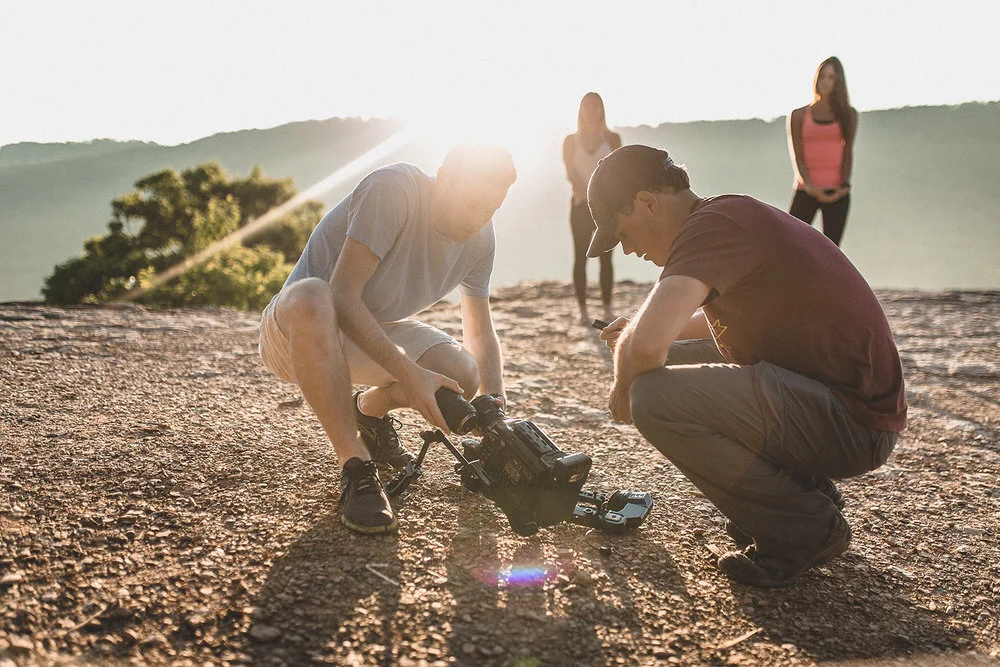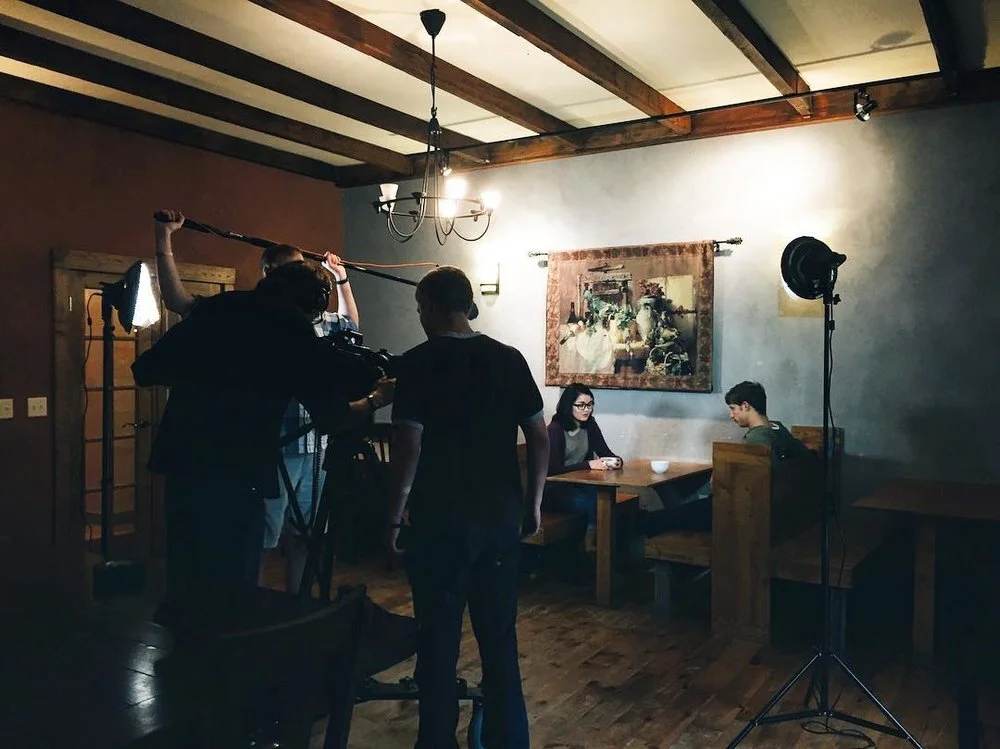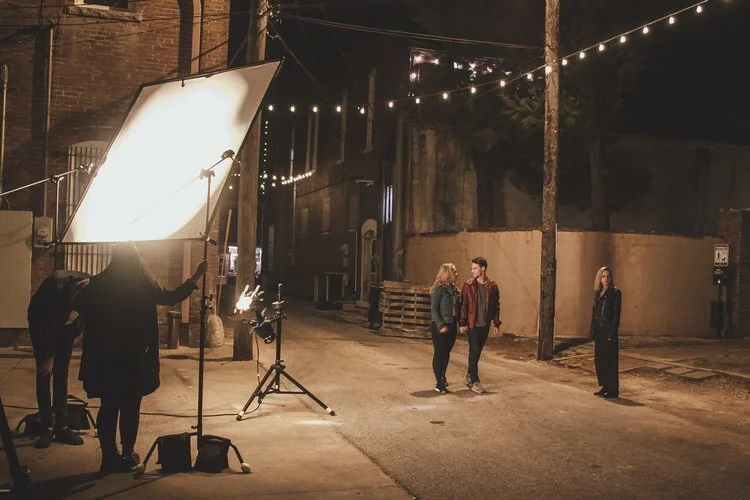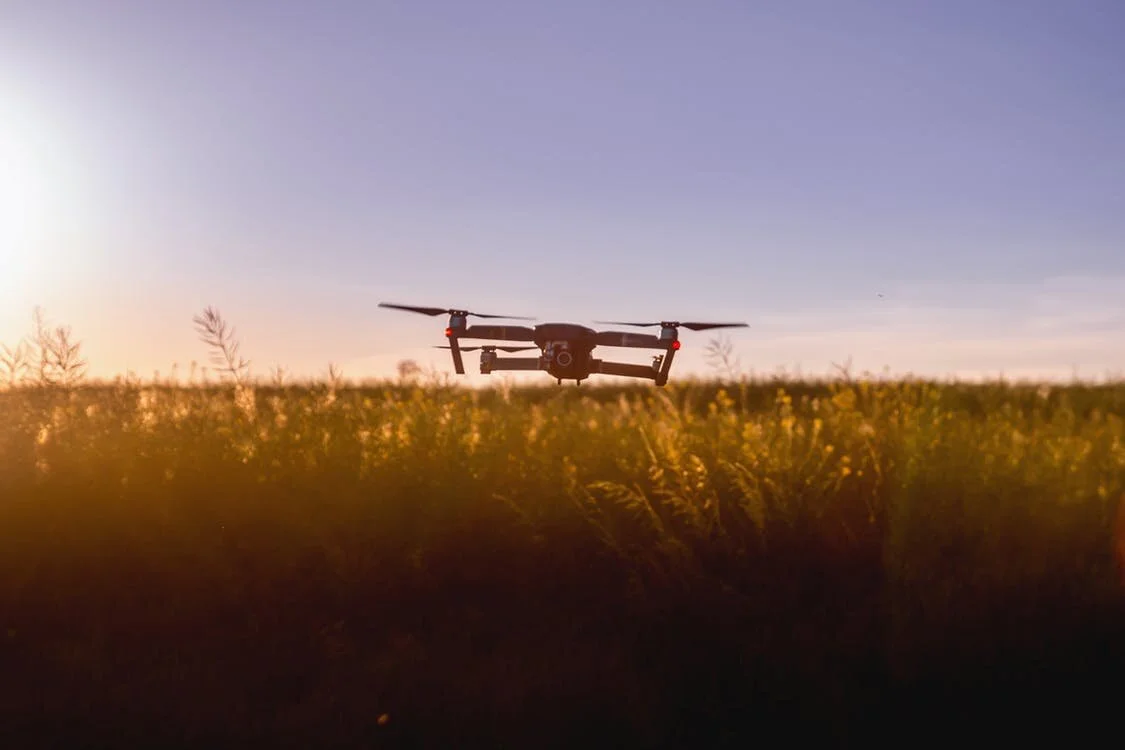3 Personality Traits of a Camera
[this blog is a sort of companion piece to Trevor's article on the camera being a character]
Over the years, I've come to see cameras in a way that I never thought I would. I used to think that the best thing to do was to find a camera with the highest possible resolution, and film with that - no matter the story, content, themes or tone. Over time, though, I've come to appreciate the vast differences between cameras, and how they can complement different stories. I wanted to explore three ways in which cameras have their own personalities, what they mean for the final product, and how filmmakers can use them to their advantage.
1. The Format
Ah, the classic debate - film or digital. Some say it doesn't matter, some swear by it. Writers like Quentin Tarantino write their screenplays with the format in mind. Cinematographers like Roger Deakins are completely fed-up with the whole debate. Tommy Wiseau revolutionized the industry by filming on both film and digital. At the same time. Whatever your opinion, there are a few key differences between the two, besides cost. Here's a over-simplified rundown of a coupl of ways the format affects the film:
Celluloid
Warm skin tones: film grain is random, erratic. It gives the footage an almost painterly feel - especially on smaller formats such as 16mm. Because of this, faces and skin tones often look more pleasant on film. It captures the light and colour in a way that can only be described as genuine.
Less grading: In digital, we generally try to shoot in flat picture profiles, in order to give more verticality to grade in post (often in order to emulate a specific filmic look). On film, the blacks and whites are already set, and the contrast is established. Beyond this, different film formats already have built-in color profiles, which give them their own mood and emotion.
Warmth: Obviously, this depends largely on the lighting set-up. But there is a warmth to film, which contributes to Point 1.
Nostalgia: This is probably one of the overused reasons to shoot on film, but there's no denying the warm, classic feeling that good ol' film creates.
Digital
Crispness: Particularly with the advent of consumer 4k recorders, digital video has the ability to capture details and clarity that's not possible with most film formats.
Ease: This doesn't directly contribute to the personality of the final image, but it does affect the kind of image you can film. That's why so many documentaries are shot on digital - it's easy to carry a small digital camera or DSLR around with you, and whip it out whenever something relevant happens. Film requires a higher level of set-up, planning and dedication, which has a direct impact on the final image.
Verticality: This is the flip-side of Point 2 in the Celluloid list. Shooting in RAW or a solid flat profile gives an enormous amount of leeway when altering the image in post.
Emmanuel Lubezki, filming The Revenant. The digital sensor was one of many creative choices that gave the film its distinct tone. Credit: Kimberly Finch
There are significant differences between digital and film formats. Obviously, there are variations within each format (more on that later), but this is a good starting point for what kind of look you want to achieve. While many blockbusters are still shot on film, there are a lot of stylistic reasons that a director or cinematographer might choose to shoot on digital. The Revenant was shot in digital, because cinematographer Emmanuel Lubezki wanted to immerse the audience in the breathtaking scenery and intense suffering that the character endured, without the separation that celluloid film grain presents. The digital sensors had the ability to immerse the audience in the setting without the kind of separation that classic film creates.
“It was like opening a window for the audience to get them immersed in this world, whereas film still had that poetic or romantic look... It wasn’t really allowing me to get immersed into the world of these trappers the way the digital cameras did.”
2. The Sensor
Is it a Blackmagic Pocket Cinema Camera, with a micro 4/3 sensor, or a full-frame Sony A7SII? 16mm or 32mm film? Directors like Stephen Soderbergh and Sean Baker decided to film their movies on iPhones. The small devices were, no doubt, easier to use, but the smaller sensor also presents its own set of image characteristics. Smaller sensors often result in deeper depths of field, because of the relationship between the crop factor and lenses. They also tend to struggle more in low-light situations, and create a more heavily sharpened image. However, this might be just what you're going for. For Tangerine, filming on iPhones gave the movie a very personal, realistic tone. To sum up, these are some of the positive characteristics associated with each type:
Large Sensor (also applies to larger-format celluloid)
Shallow depth-of-field: I know - technically, this isn't a direct result of having a larger sensor. But it is usually a by-product of the lens choices, based on the image crop-factor.
Better low-light performance: Again, this isn't directly due to the sensor size, but there is a correlation. You will find it easier to film in low-light situations on most larger-sensor cameras.
Cinematic: This is a by-product of the characteristics of large sensors. Sometimes, it's difficult to tell just what's different about an image, except that it's more cinematic. Larger sensors have the ability to convey that type of tone.
Small Sensor
Personal: Because we associate small sensors with home videos and Snapchat messages, videos shot on them can evoke similar feelings of closeness and personality.
Casual: Most cameras that house small sensors make people feel more comfortable - less like they're on a movie set. But the sensors themselves also convey an almost inconsequential tone, as if the script falls away, and it ends up as just people filming people living life.
Director Steven Soderbergh shot on an iPhone 7 in Unsane. Credit: Fingerprint Releasing/Bleeker Street
“It was my intention that the resulting movie be one that any person can go to a theatre and watch — and have no concept of what it was shot on, or care, because it looks like a normal film.”
3. The Body
Finally, we come to the camera body. Is it bulky and heavy like the IMAX cameras that DP Van Hoytema manages to carry around on his shoulders? Does it shake uncontrollably when shot handheld, like the camcorder used in the Blair Witch Project? It may not seem like the weight and size of the camera really matter, especially with custom-made shoulder rigs, and the fact that every company keeps releasing smaller and smaller models. Admittedly, this factor mainly applies when shooting handheld, but it does make a significant difference in how your footage looks.
Large Body
Cinematic camera shake: Large cameras give that nice, controlled camera shake that we're all accustomed to.
Grandiose aerial shots: This is a by-product of the fact that large cameras have to be rigged onto helicopters and airplanes, in order to achieve aerial shots. You think Kubrick flew a Mavic Pro over the Glacier National Park to capture the opening of the Shining? No. He didn't. He used a helicopter.
Gravitas: This is a little more abstract, but in my mind, having the weight and encumbrance of a large camera lends a sense of significance and magnitude to a scene.
Small Body
Mobility: Small cameras can be mounted to helmets, strapped to chests and attached to remote control cars and drones.
Versatility: Small cameras can fit into tight spaces, giving the ability to shoot unique, creative shots.
Frenetic...ness: Small cameras become ideal for found-footage sequences. This is why Oliver Wood chose to shoot the very shaky movie, The Bourne Ultimatum on smaller cameras like the Arricam Lite (LT) Camera. The lighter weight allowed the cameramen to achieve the signature shaky cam look that has become so prevalent in action movies today.
Director Steven Soderbergh shot on an iPhone 7 in Unsane. Credit: Fingerprint Releasing/Bleeker Street
Beyond these, there are factors like color science, low-light performance, resolution, in-camera stabilization, and a whole host of factors that impact the look of the final image. People tend to like the way Canon cameras capture skin tones, or how digital Alexas bear a resemblance to celluloid, or how the Sony cameras enter beast mode in low light. But I digress. These three factors are what I personally find are the most significant when looking at the personality of a camera.
“But Kyle, I can’t afford to rent an IMAX camera, and purchase and process the thousands of feet of 70mm film needed to make my 3-hour epic.”
Then are you really dedicated to your craft? I kid. No, it's likely you won't have much control over a number of the factors I've mentioned here. Neither do I. But what you can do is be mindful of the effect you want, and aim for something similar. Let's say I'm shooting a simple, short film about a couple dealing with the struggles of their relationship. It's a sweet, warm film set in the past that I decide would look best on 16mm film. However, all I have is an A7SII. Well, maybe I'll build a small camera rig to emulate the weight and size of a 16mm camera. Maybe I'll color grade using a LUT that emulates those warm skin tones and pastel color pallet. Maybe I'll even throw on a nice film grain filter, and alter the aspect ratio. Going too far in any direction is likely to become distracting, but if I know exactly how I want the film to feel, I can find ways to nudge the final product in that direction. If you've ever taken a gander at Cooke's YouTube channel, you've seen the levels of passion with which each cinematographer talks about the cameras, the lights and the formats.
A painter might look at a vista and choose to paint in watercolors. She might choose to use broad strokes, and paint with a large brush, to complement the feeling of grandeur and scope (I'm not a painter). In the end, someone like me probably won't be able to tell what she painted with, or how she went about it, but I will be able to feel the tone she consciously imprinted on it through her methods and tools. The purpose of this thinking isn't to be limited by what's available, but to be conscious of it. What you shoot on, and how you shoot it will have an impact on how your film feels. If you have a good story, it doesn't really matter what you film on, because that's what people are going to see. But if you have the opportunity to do so, why not be aware of all the tools in your toolbox?
-Kyle Fossé













Kyle discusses three ways that different cameras have their own personalities, and how they can inform your decisions about what to film on.